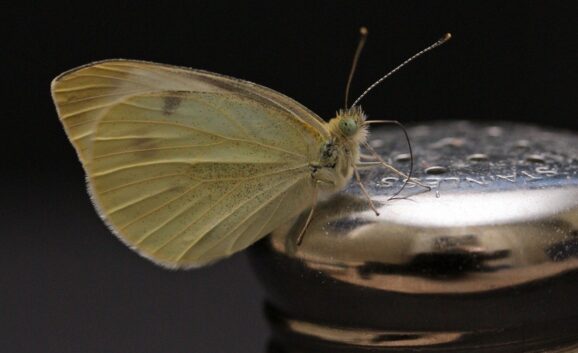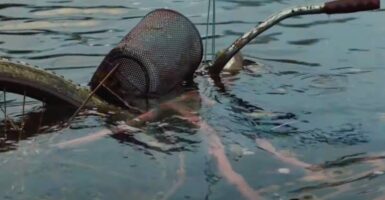Road Salt Alters Butterfly Brains And Bodies
This article is more than 2 years old
 In the Northeast, as in many other places, this past winter was absolutely brutal. In February, the Boston Globe ran an article about how many areas were running out of road salt. It got so bad that price gouging became an issue, and some states turned to somewhat strange alternatives, like pickle juice. Ships carrying 50,000-65,000 tons of salt from Chile were heading up the coast as quickly as possible, but even those vast quantities weren’t enough for Mother Nature this time around. We dumped oodles of salt on the roadways this winter, and researchers are learning that it’s messing with animals, specifically butterflies.
In the Northeast, as in many other places, this past winter was absolutely brutal. In February, the Boston Globe ran an article about how many areas were running out of road salt. It got so bad that price gouging became an issue, and some states turned to somewhat strange alternatives, like pickle juice. Ships carrying 50,000-65,000 tons of salt from Chile were heading up the coast as quickly as possible, but even those vast quantities weren’t enough for Mother Nature this time around. We dumped oodles of salt on the roadways this winter, and researchers are learning that it’s messing with animals, specifically butterflies.
You might not think that salt would be a problem, given that it’s naturally occurring, as opposed to the pesticides and chemicals we introduce into the ecosystem. It’s also true that butterflies like salt—they even drink crocodile and turtle tears. But the pursuit of salt is part of the insect’s way of life, and if humans deliver an excess of the stuff for the taking, it can actually end up messing with their physiologies, according to a new study published in the Proceedings of the National Academy of Science.
Scientists harvested plant samples from a reserve near St. Paul, Minnesota. They measured the salt levels in plants that were within five meters of roadways and compared them to the salt levels of plants 100 meters away. The oak and milkweed plants near the roads had anywhere from 1.5 to 30 times as much sodium in them. Then, the scientists gave these milkweed plants to monarch butterflies. The monarchs that snacked on the sodium-laden roadside plants had a 40.5% survival rate as compared to the monarchs that dined on milkweeds taken from the prairies, which had a survival rate of 58.2%.
They also learned that butterflies that ate salty plants developed differently—males grew thicker thoracic muscles, which control wing and leg movement, while females grew bigger eyes. In order to make sure that these results weren’t a consequence of roadside pollution, rather than salt content, they replicated the experiment using plants grown in controlled environments, these had higher salt contents but no exposure to car exhaust. The results were the same—too much sodium was bad news for the butterflies. Oddly, while the male butterflies developed more muscle when they ate more salt, the female developed less. In addition to the bigger eyes, the females also grew bigger brains, or more specifically, a greater quantity of neural tissue.
The scientists aren’t sure why sodium affects the genders differently, but they do know that over time, these changes will have significant impacts on butterfly evolution, and probably that of other insects and mammals that are beginning to rely on roadways for their salt. The study notes that animals are already changing their behavior to take advantage of the salt supply—generally reclusive animals such as moose are already demonstrating a shift from ponds hidden deep in the woods to ponds near the road that contain salty runoff.












